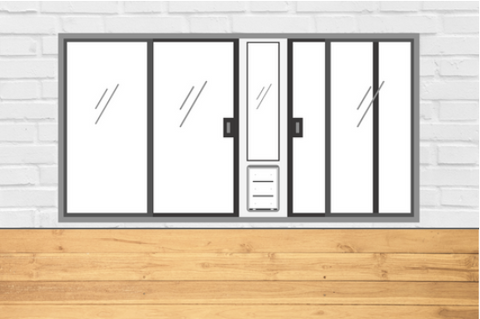How Can I Install A Patio Pet Door If My Sliders Meet In The Middle?
Installation can work the same way as with standard sliding doors. In order for the panel insert to remain secure and stable, you will need to make one of your sliders stationary. In essence, you will only be allowed to slide and walk through one of your two sliders.

Tools and Materials Needed:
- Patio pet door panel
- Measuring tape
- Level
- Pencil
- Endura Monorail Adapter (optional)
- Drill (optional)
- Screws (optional)
Instructions:
1) Measure the width and height of your sliding door track. Use a measuring tape to measure the width and height of the track. Be sure to measure at least twice to ensure accuracy.
2) Choose the right size patio pet door panel. Make sure to choose a panel that is the correct size for your sliding door track. An adjustable, pet patio panel should be able to extend to the height of the track.
3) Insert the patio pet door panel into the sliding door track. If you are using the Endura Monorail Adapter, insert the adapter into the track first. Then, insert the patio pet door panel into the adapter.
If you are not using the adapter, simply insert the patio pet door panel into the track.
4) Adjust the height of the patio pet door panel. Use a level to adjust the height of the panel. The panel should be level and centered in the track.
5) Secure the patio pet door panel in place. Now you need to anchor one of the sliding doors into the panel. This will make that door immovable, while your other slider door can still open and close freely.
To anchor the door, you can use a variety of methods, such as:
- Drilling a screw through the door and into the panel.
- Using a bracket to attach the door to the panel.
- Using a latch to secure the door to the panel.
Once the door is anchored, test your other sliding door to ensure that it closes firmly against the panel.